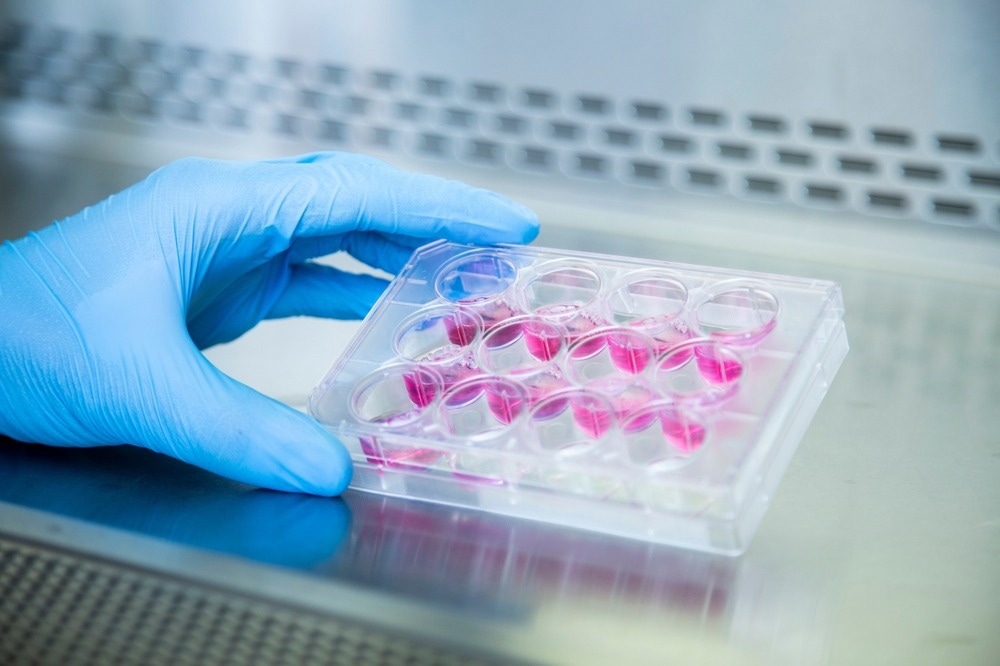Single-cell expression profiling is revolutionizing disease research by providing detailed insights into individual cell behavior. This cutting-edge technique is unlocking the mysteries of diseases at a cellular level, paving the way for personalized medicine.

Image Credit: OMER FARUK ERCEYLAN/Shutterstock.com
What is Cell Expression Profiling and How Does it Work?
Cell expression profiling is a powerful technique for measuring the activity of genes in individual cells.1 This technique provides valuable insights into cellular function, behavior, and response to different conditions.1
Microarray technology and RNA sequencing (RNA-seq) were among the first widely used methods for gene expression profiling.2 Microarray technology measures fluorescently labeled samples hybridized to immobilized DNA probes representing genes of interest on a solid support.2 RNA-seq, on the other hand, sequences the entire transcriptome of a tissue sample or cell population, providing a comprehensive snapshot of gene expression and enabling the detection of novel transcripts and alternative splicing events.2
Although these techniques have been helpful in disease research, single-cell gene expression profiling has taken gene expression analysis to the next level by enabling the study of individual cells.1 This technique allows researchers to capture the heterogeneity within a population of cells and identify distinct cell types or states. 1
To perform this analysis, individual cells are isolated, and their RNA is extracted. Various methods, such as microfluidics or fluorescence-activated cell sorting (FACS), are used to isolate single cells.1 The isolated RNA is then converted into cDNA and amplified using techniques such as PCR.1 Several protocols have been developed to deal with the low amount of RNA in these samples, allowing the analysis of thousands and even millions of cells in parallel, such as Smart-seq and Drop-seq.1
Typical Uses of Cell Expression Profiling
Cell expression profiling is a versatile technique with several uses in research. Its primary use is the identification of cellular heterogeneity in tissue or organs, which provides a deeper understanding of the complex biological systems under study.3 This property allows for its application in various fields.
In disease research, it can detect rare cell populations or subtypes that may have clinical significance in a specific pathology.3 This aids in uncovering molecular signatures associated with a condition, such as a disease or treatment. 3
By comparing expression patterns between healthy and diseased cells, it is possible to identify genes that are differentially expressed and gain insights into disease mechanisms.1,3 Identifying gene patterns or signatures can aid in selecting new biomarkers for diagnosis, prognosis, or treatment response. 1,3 It can also assist in identifying target genes and pathways for drug development, assessing drug effects, and identifying potential drug resistance mechanisms. This technique is also crucial in developmental biology, neuroscience, and immunology. 1,3
Cell Expression Profiling for Disease Research
Compared to traditional bulk gene expression analysis, which provides only an average expression profile of a cell population, single-cell expression profiling allows for the identification and characterization of cellular heterogeneity within a tissue or organ.4 This translates into a more comprehensive understanding of disease mechanisms, detection of possible biomarkers, therapeutic targets, and treatment responses.1
The study of cell-cell interactions and communication within complex tissues or organs has shown great results using single-cell expression profiling.1 This technique provides insights into how different cell types interact and contribute to disease processes, such as immune responses, tumor micro-environment, and neurodegenerative disorders. 4
Personalized medicine or precision medicine is one of the key medical practices benefiting from this technique.1 Single-cell expression profiling has the potential to advance research by enabling the identification of patient-specific molecular signatures.1,4 These signatures can help guide treatment decisions, predict drug responses, and facilitate the development of targeted therapies tailored to individual patients.

Image Credit: nobeastsofierce/Shutterstock.com
From Theory to Real Applications of Cell Expression Profiling in Disease Research
Several studies have demonstrated the importance of single-cell expression profiling in disease research. This section will explore some examples.
Sultana et al. (2023) conducted a study to identify gene biomarkers for the diagnosis and prognosis of non-small cell lung cancer (NSCLC) using single-cell RNA sequencing data and bioinformatics methods.5 They identified a total of 158 differentially expressed genes (DEGs). GO enrichment and KEGG pathway analysis were performed, and a PPI network was constructed, identifying 12 key genes.5 Additionally, several transcription factors and miRNAs associated with the key genes were identified.5
A study was conducted to characterize the immunopathology of Ebola Virus. The study utilized single-cell transcriptomics and CyTOF-based single-cell protein quantification to investigate peripheral immune cells during EBOV infection in rhesus monkeys.6 The study obtained 100,000 transcriptomes and 15,000,000 protein profiles.6 The results revealed that immature, proliferative monocyte-lineage cells with reduced antigen-presentation capacity replace conventional monocyte subsets.6
Lymphocytes showed upregulated apoptosis genes and decreased abundance.6 The study also identified molecular determinants of tropism in circulating immune cells by quantifying intracellular viral RNA and examined temporal dynamics in viral and host gene expression.6
The findings from these two studies demonstrated the versatility of single-cell expression analysis in disease research.
Prominent Biotech Companies for Cell Expression Profiling Equipment
Several commercial companies are developing cell expression profiling platforms. These companies include 10x Genomics, Fluidigm, NanoString Technologies, and BD Biosciences.7,8
The Chromium platform by 10x Genomics enables single-cell gene expression analysis, immune profiling, and spatial transcriptomics.7 This platform enables researchers to analyze gene expression in thousands of individual cells simultaneously.7 Fluidigm offers the C1 and Biomark HD systems, which provide flexible experimental design options and high-throughput capabilities.7
BD Biosciences offers the Rhapsody system, which combines microfluidics and molecular barcoding to analyze gene expression in thousands of individual cells, providing high-quality data for single-cell transcriptomics.8
NanoString Technologies offers the nCounter system. The system uses digital barcoding technology for gene expression analysis.7 It provides highly sensitive and reproducible results for single-cell or small cell population analysis.7
These tools have greatly advanced the ability to perform cell expression profiling. Researchers can now explore cellular diversity at an unprecedented level. They are commonly used in disease research, drug discovery, immunology, neuroscience, and developmental biology, demonstrating their significant impact in the rapidly evolving scientific environment.
Sources
Jovic D, et al. (2022). Single‐cell RNA sequencing technologies and applications: A brief overview. Clinical and Translational Medicine, 12(3). doi.org/10.1002/ctm2.694
RNA-seq and microarray technology comparison. RNA-Seq vs Microarrays | Compare technologies. (n.d.). [online] Available at: www.illumina.com/.../microarray-rna-seq-comparison.html
Introduction to gene expression profiling. Thermo Fisher Scientific - US. (n.d.). [online] Available at www.thermofisher.com/.../introduction-gene-expression-profiling.html
He S, et al. (2020). Single-Cell Transcriptome Profiling of an Adult Human Cell Atlas of 15 Major Organs. doi.org/10.1101/2020.03.18.996975
Sultana A, et al. (2023). Single-cell RNA-seq analysis to identify potential biomarkers for diagnosis, and prognosis of non-small cell lung cancer by using comprehensive bioinformatics approaches. Translational Oncology, 27, p. 101571. doi.org/10.1016/j.tranon.2022.101571
Kotliar D, et al. (2020). Single-cell profiling of ebola virus disease in vivo reveals viral and host dynamics. Cell, 183(5). doi.org/10.1016/j.cell.2020.10.002
Vuksanaj K. Top 10 spatial biology companies. GEN. [online] Available at: https://www.genengnews.com/a-lists/top-10-spatial-biology-companies-2/
BD RhapsodyTM Scanner. Single Cell Capture System. (n.d.). [online] Available at: www.bdbiosciences.com/.../rhapsody
Further Reading
Last Updated: Jan 24, 2024